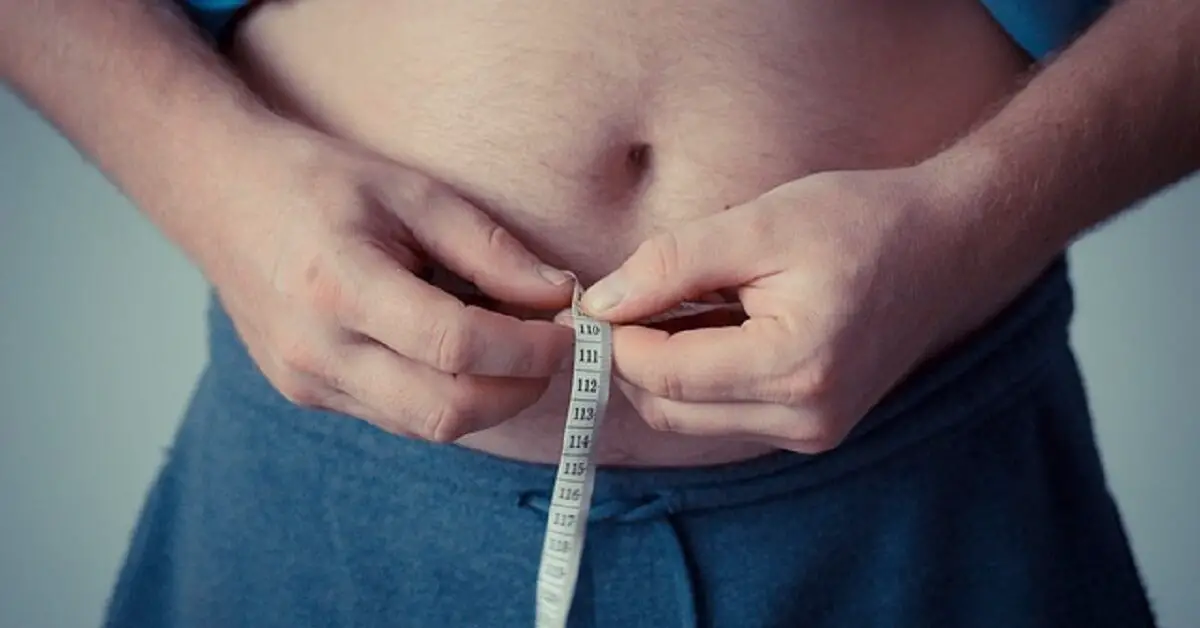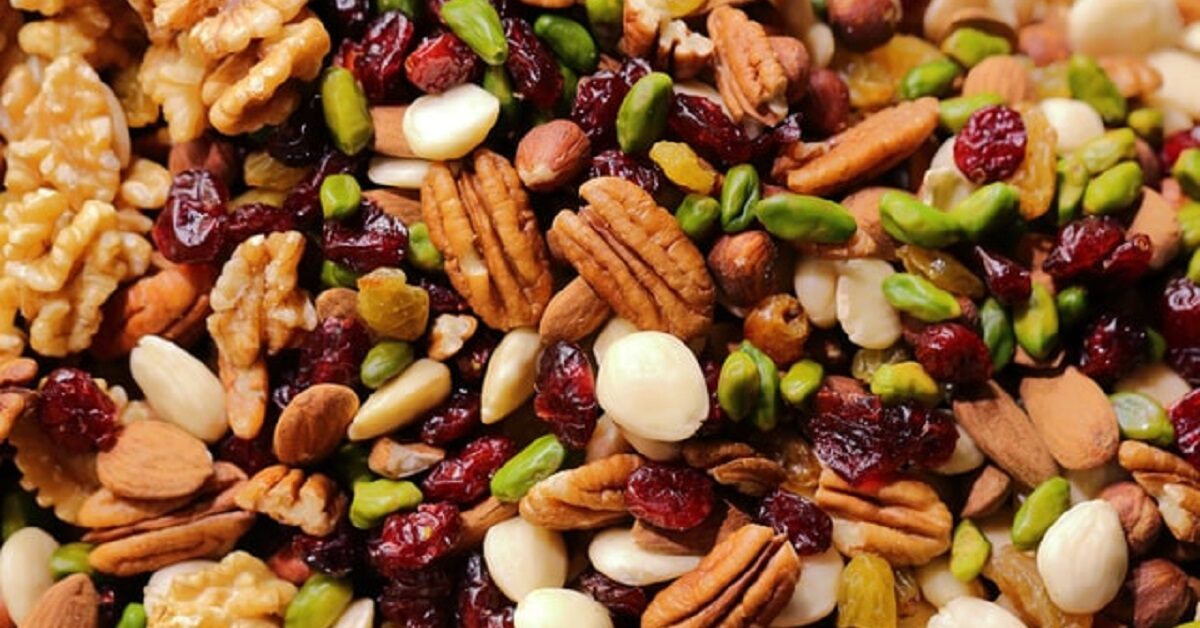
Our Carb Cycling Macro Calculators help you generate individualized daily macronutrient balances for meal plans optimized to promote weight loss and boost lean mass in men and women.
The apps generate macro balances based on macro ratios calculated for your age, sex, height, weight, and physical activity level.
We show you how to use the information generated to create macronutrient balance plans for carb cycling.
Our calculators are entirely free to use. You only need to enter your information, and our Carb Cycling Macros Calculator For Weight Loss (follow the link to view the calculator) generates a 12-week carb cycling plan based on a researched, peer-reviewed model.
Women and men who live active lifestyles may also use our Carb Cycling Macros Calculator For Athletes and Bodybuilders (follow the link to view the calculator) to create 7-day, 10-day, or 14-day macro plans designed to reduce body fat, boost lean mass, and improve sports performance.
We link you to resources where you can find delicious low-carb recipes and meal plans that make carb cycling fun.
Contents:
Carb Cycling Macros Calculator for weight loss: User info
Carb Cycling Macros Calculator for men and women: User info
Safety considerations: Macro ratios and balances
Carb Cycling benefits for active men, women, and athletes
Carb cycling may promote fat loss, improve insulin sensitivity
CC may be effective for weight loss and control
What is a low or high-carb diet?
12-week carb cycling macros for weight loss
Carb cycling macros for active men and women
Delicious low-carb recipes and meal plans
What is carb cycling?

Carb cycling is a diet strategy that involves cyclical variation in carbohydrate intake over days, weeks, or months to achieve various health and performance goals.
The goals include fat loss, overall weight management, muscle mass gains, improved fitness or sports performance, and energy for a high-intensity training schedule or competitive sports.
Carb cycling is popular among people who live an active lifestyle (such as athletes and bodybuilders) that involves significant variations in energy requirement between rest and activity days on a daily, weekly, monthly or seasonal basis.
The variations in energy requirements are usually due to having a regular training schedule or participation in competitive events.
Many active people on a carb cycling plan eat a low-carb diet when not training or engaged in an athletic activity but temporarily shift to a high-carb diet during physical training or competitive sports activity.
Although there is very little research data on the health benefits of carb cycling, the few studies suggest significant health benefits to be derived (Sundfor et al., 2018; Kysel et al., 2020).
The choice of a low-carb diet during light activity days is informed by evidence from multiple research studies.
Studies show that low carbohydrate (Foster et al., 2003; Shai et al., 2008; Slomski, 2019) and very-low-carbohydrate (ketogenic) diets promote fat loss, weight loss maintenance (Ebbeling et al., 2018), and boost lean mass in combination with high protein (Manninen et al., 2006)
Some scholars have raised questions about the assumption that dietary carbs are essential as sources of energy for adults (Manninen et al., 2004). However, nutritionists recommend boosting (Mata et al., 2019) carb intake in periods of intense physical activity because they are the most available energy sources to fuel muscular activity (Escobar et al., 2016).
Many on a carb cycling plan alternate between low-carb/high-fat, moderate-carb/moderate-fat, and high-carb/low-fat diets alongside adequate protein levels in a pattern designed to sync with variation in energy requirement.
There is a consensus that low-carbohydrate, very low-carbohydrate, low-calorie (LC), and very-low-calorie diets (VLCD) promote long-term weight and fat loss and boost lean mass (Tsai et al., 2006; Oh et al., 2021).
Some researchers contested claims that low-carb and very-low-carb diets are superior to other weight-loss diets (Kirkpatrick et al., 2019). But they agreed that low-carb diets helped control appetite, reduced triglyceride levels, and helped in diabetes management.
The conflicting views among researchers on the effectiveness of low-carbohydrate diets for fat/weight loss and improved lean mass could be due to different protein levels relative to fats.
Our macro plans maintain relatively high protein levels (at least 30%) throughout all cycling phases because protein is essential for improving and sustaining lean mass.
It is also essential to prioritize healthy fats when cycling between low-carb/high-fat and high-carb/low-fat diets.
Healthy fats include monounsaturated and polyunsaturated fats. They also include long-chain n-3 polyunsaturated fatty acids, such as eicosapentaenoic acid (EPA) and docosahexaenoic acid (DHA).
EPA and DHA — also known as omega-3 fatty acids — have cardioprotective properties.
Excellent sources of healthy fats include extra virgin olive oil, peanuts, avocados, sunflower, and nuts (hazelnuts, almonds, pistachio).
Fatty fish and seafood are good sources of omega-3 fatty acids.
Carb Cycling Macros Calculator for weight loss: User info

[Note: Click this link to scroll down to use our Carb Cycling Macros Calculator for weight loss. But we strongly advise that you read the following information/guide before proceeding.]
A calorie deficit is essential for weight loss. All carb cycling programs must implement some form of calorie restriction to create a deficit.
While the internet abounds with anecdotal claims of the effectiveness of carb cycling for weight loss independent of calorie deficit, peer-reviewed studies emphasize calorie deficit alongside carbohydrate and calorie cycling.
But weight loss dieting does not mean you have to take tiny portions that leave you constantly hungry. Low carb and low calorie diets with high protein and high fiber are filling because protein and fiber promote satiety.
Our Carb Cycling Calculator for weight loss (see below) is based on a plan by Kresta and associates (2010).
The calorie cycling regime incorporates a significant calorie deficit and has the added advantage of preventing long-term reductions in resting energy expenditure (REE).
The prevention of reductions in REE makes the weight loss plan more effective.
The authors also noted that the high carb and high protein diets they tested in their study were equally effective for weight loss.
In other words, Kresta and colleagues found no difference between the effects of calorie cycling with a high-carb or high-protein diet.
However, other research studies (Harvie et al., 2018; Wycherley et al., 2012) suggest that low-carb/high-protein diets may be more effective for inducing fat loss.
They may also be more effective for improving lean mass and preserving fat-free mass.
Our app allows you to calculate daily calorie intake and macronutrient balance for a 12-week carb cycling for weight loss plan based on your age, sex, weight, height, and physical activity level.
You complete the first cycle on the 12th week, but you may continue cycling for a maximum of 20 weeks (see Tables 3 and 6).
Note that this is a short-term weight-loss intervention plan. There is not enough data on safety or effectiveness of the plan beyond 20 weeks (5 months).
There is not enough research on the long-term effects of carb cycling for weight loss. So, we recommend them only for short-term purposes.
We advise users to round up all low-calorie recommendations to a minimum of 1,200 calories/day for women and 1,500 calories/day for men. That means that you shouldn’t take less than the minimum daily calories recommended for women (1,200 calories/day) and men (1,500 calories/day) at any phase of deficit feeding, even if the calculator generates such numbers.
However, ensure that you cycle back to maintenance calories as prescribed to prevent long-term reductions in resting energy expenditure (REE).
Consult your healthcare provider if you wish to try recommendations significantly below 1,200 calories/day.
You may want to recalculate your calorie recommendations monthly, especially if you have lost significant weight since starting the program. You do this to ensure you get dieting recommendations based on your current weight.
You also get the best weight loss results when you combine the diet plan with a physical activity level equivalent to at least Basic Cardio as defined below:
Sedentary: Lying down or sitting for 7 days/week watching TV.
Light Activity: Light domestic chores such as dishwashing, cooking, and cleaning for at least 4 days/week.
Moderate Activity: Walking or strolling, gardening, washing the car, mowing the lawn, snow blowing for at least 45 minutes-1 hour 3-4 days/week.
Basic Cardio: Brisk walking, jogging, pleasure cycling, skateboarding, or recreational trampoline exercise for at least 45 minutes-1 hour, 4 days/week.
Intense Cardio: Running, basketball, soccer, football, vigorous exercising on a treadmill or elliptical for at least 1 hour, 3-4 days/week.
Extreme Cardio: Athlete-level exercise activity for at least 1 hour, 3-4 days/week.
You may use the data generated by our calculator to draw up a 12-week carb cycling macro plan for weight loss (follow this link to view a sample plan).
CC for weight loss
[Note: You may download and/or print this page after generating an individualized macronutrient plan.]
Carb Cycling Macros Calculator for active men, women: User info

[Note: Click this link to scroll down to use our Carb Cycling Calculator for athletes and bodybuilders. But we strongly advise that you read the following information/guide before proceeding.]
Our Carb Cycling Macro Calculator for men and women with active lifestyles (athletes and bodybuilders) guides you on macro balances that maximize fat loss and lean mass.
The suggested macro balances help you create a carb cycling meal plan best suited to your needs, but they are not fixed recommendations.
We endeavor to explain the basis for the suggested macronutrient ratios and balances so that you can modify them to suit your specific situation or requirements.
The calculator is best for active people who need a diet that supports high lean mass and low body fat percentage, and whose activity levels vary significantly over days, weeks, or months.
It allows users to adjust their carb intake as their activity level and type of physical activity (aerobic exercise vs. anaerobic exercise) change over days, weeks, months, and seasons.
Keep in mind that this is not a carb cycling macros calculator for weight loss (follow this link to use our carb cycling calculator for weight loss).
We designed it to calculate macro balances based on macro ratios that help reduce percent body fat/maintain low percent body fat and improve lean mass/maintain high lean mass.
These goals are achievable without substantial weight loss.
Thus, the carb/calorie requirement estimates our calculator generates are based on maintenance calories (rather than weight loss calories) for your age, weight, sex, height, and daily activity levels.
However, if you wish to add muscle or lean mass (or lose weight), you may adjust the calorie recommendation — by 5%, 10%, or more — while maintaining the recommended macronutrient ratios and your active lifestyle.
Enter your age, sex, weight, and height to generate an individualized macronutrient balance plan.
Our calculator estimates:
a. Basal Metabolic Rate/Resting Metabolic Rate(RMR).
b. Your daily maintenance calories, taking your physical activity level into account.
c. Your daily carb, protein, and fat requirements (in grams) for carb cycling based on your activity level.
The calculator estimates macronutrient balances for activity levels ranging from sedentary to intense activity and professional athlete.
We based our macro balances on ratios designed to maximize lean mass in athletes and bodybuilders (learn more about the research evidence here).
We graded the activity levels incrementally to help you find the one that best describes your activity level on any day.
Sedentary/Rest Day: Lying down or sitting all day watching TV.
Light Activity Day: Activities such as dishwashing, cooking, mopping, dusting, vacuuming, laundry, bathing, and other routine domestic chores for at least 45 minutes-2 hours.
Moderate Activity Day: Walking or strolling, gardening, washing the car, mowing the lawn, and snow blowing for at least 45 minutes-1 hour.
Basic Cardio Day: Brisk walking, slow jogging, pleasure cycling, and recreational swimming for at least 45 minutes-1 hour.
Intense Cardio Day: Running, basketball, football, soccer, vigorous exercising on a treadmill or elliptical for at least 45 minutes-1 hour.
Extreme Cardio Day: Professional athlete-level aerobic exercise for at least 45 minutes-1 hour.
Moderate Strength Training Day: Moderate resistance training or weightlifting, calisthenics, or bodyweight resistance training (push-ups, situps, squats) for at least 45 minutes-1 hour.
Intense Strength Training Day: Heavy resistance training or weightlifting activity for at least 45 minutes-1 hour.
Extreme Strength Training Day: Elite level bodybuilder or weightlifting level for at least 45 minutes-1 hour.
You may use the data generated by our calculator to draw up a 5-day, 7-day, 10-day, or 14-day carb cycling plan (follow these links to view sample plans).
CC for athletes and bodybuilders
[Note: You may download and/or print this page after generating an individualized macronutrient plan.]
Safety considerations: Macro ratios and balances

Our Carb Cycling Calculators generate macronutrient balance recommendations based on nutrition standards that put safety first.
We adopt low-carb/high protein macronutrient ratios for weight loss. The macronutrient distribution ranges for weight loss are Carbs: 10%-30%; Protein: 40-50%; Fat: 25%-40%.
Carb cycling macronutrient distribution ranges for athletes and bodybuilders are Carbs: 10%-55%; Protein: 30%-40%, and Fat: 15%-50%.
Experts recommend carb cycling only for the short term. We need more research studies on the safety of long-term carb cycling, especially plans recommending extreme carb or calorie restriction. We don’t know enough about the long-term effects of alternating between very low and very high carb or calorie diets.
Keep in mind that low carb intake has been associated with carb flu (also known as keto flu).
According to Bostock and associates (2020), keto flu symptoms are transient and usually occur within the first few weeks of adopting a very low-carb diet.
The symptoms that manifest when dieters first go on a very-low-carb diet (<50g/day) are flu-like symptoms and others, such as:
- Headache
- Body aches and pain
- Fatigue/weakness
- Sore throat
- Nausea
- Dizziness
- Brain fog
- Gastrointestinal discomfort,
- Decreased energy
- Feeling faint and
- Heartbeat issues/arrhythmia
- Intense craving for high carb/sugary foods
The symptoms peaked in the first week and dwindled after 4 weeks.
Excessive high glycemic index cabohydrates (carbs that cause post-meal sugar spikes) may also cause digestive disturbances, rapid weight gain, worsened pre-existing high blood sugar levels, and an increased risk of cardiometabolic diseases (Jung et al., 2017; Jung Lee et al., 2018).
Due to potential adverse health effects, we don’t recommend long-term use of very-low-carb/calorie diets with less than 1,200 calories/day for women and 1,500 calories/day for men.
Our Carb Cycle Calculator keeps you within the recommended limits. We urge moderation because it improves safety and helps prevent potential health-damaging side effects of extreme dieting.
If you wish to go beyond the lower and upper limits of expert recommendations (see the section: What constitutes a low or high carb diet?) that our carb cycling calculator strictly adheres to, we strongly suggest you consult your healthcare provider.
A plan based on macronutrient balances estimated by our calculator reflects the best practices for carb cycling based on peer-reviewed research studies.
We recommend you consult your healthcare provider if you have questions about specific details, want a plan adapted to special needs, or want to adopt a carb cycling program on a long-term basis.
Regardless of the specifics, the general principles of healthy dieting apply when carb cycling: Avoid empty calories and ensure that your diet contains health-promoting nutrients, including vitamins, minerals, and fiber.
Dietary fiber helps you control blood sugar levels when taking high-carb diets. High fiber helps limit post-meal blood sugar spikes by slowing down the digestion and absorption of carbs.
Health experts don’t recommend carb cycling for people taking diabetes medication, individuals with eating disorders (such as bulimia and anorexia nervosa), chronic illness, people weakened by ill-health, and underweight individuals.
Consult your healthcare provider if you want to adopt carb cycling while pregnant or breastfeeding.
Benefits for active men, women, and athletes
Carb cycling is suited to lifestyles that involve alternating between high-intensity physical activity and relative inactivity or sedentariness.
It easily fits the lifestyles of athletes, such as sprinters, marathoners, triathletes, footballers, swimmers, and competitive cyclists.
Athletes may need extra calories to fuel their bodies before, during, and after a period of high-intensity activity but don’t need them on other days they are resting or engaging in relatively light activity.
Sprinters and endurance athletes (such as marathoners, long-distance cyclists, rowers, and swimmers) often try to boost performance by consuming carbs before, during, and after a session of intensive physical activity or while participating in a competitive event.
For example, an athlete who engages in regular weekly training sessions may adopt a carb cycling regimen that involves loading up on carbs on days they plan to hit the gym and reverting to low-carb diets at other times.
Similarly, elite athletes may use carb cycling to manipulate lean mass, gain muscle mass, or reduce fat percentage.
They may also use it to boost performance during competitive sporting events.
Lean mass is associated with improved performance in many types of sports.
Coyle 1991 recommended the proper timing of increased carb intake to support heavy training schedules and competitive sports.
The researcher recommended that athletes time the intake of moderate and high glycemic carb foods before and after physical activity.
The author also recommended the ingestion of carbs in the form of glucose, sucrose, or maltodextrins when possible during exercise activity.
McConell and associates (1996) reported that ingesting carbs before and during exercise improved performance relative to controls.
Ingesting carbs post-exercise also helped replenish lost energy stores.
Benefits for bodybuilders
Bodybuilders may also use carb cycling to gain muscle mass, reduce fat percentage, and support intense strength-training activity.
Bodybuilders use carb cycling to vary their carb intake in a pattern that fits their training and competitive schedule.
For instance, a bodybuilder trying to cut fat to be in top physical form ahead of a competitive event may go on a low carb/high protein diet (Lambert et al., 2004).
They may also intermittently ingest carbs to supply energy during high-volume training sessions ahead of the competitive show.
But during the off-season, when they focus on bulking up, they may take a high-carbohydrate/high-protein while maintaining fats at a moderate but adequate level (at least 15%).
Proper timing of co-ingesting carbohydrates and proteins may also promote bulking due to the protein-sparing effect of carbs.
When your diet contains enough carbohydrates, you don’t need to break down a significant proportion of your protein intake to supply calories. Instead, protein may be used more efficiently for building muscle mass and optimizing lean mass gains.
However, some studies (Koopman et al. 2007) suggested that taking carbohydrates along with protein post-exercise did not appear to stimulate increased muscle protein synthesis when sufficient protein was ingested.
Carb cycling may promote fat loss, improve insulin sensitivity
Studies have long established that low-carb/high-fat diets increase insulin sensitivity and boost fat loss.
Research also suggests that alternating periods of low-carb/high-fat diets with periods of higher carb/lower fat diets may be equally or more effective for weight loss and improving insulin sensitivity.
Very low-carb/high-fat diets (<50g carbs) with adequate protein, vitamins, and minerals may induce a metabolic state of ketosis in which the body switches to burning fat instead of carbs to obtain calories.
Diets with daily carb levels higher than 50g (but less than 100g) have also been shown to promote fat loss and improve insulin sensitivity.
A study reported that obese individuals with type 2 diabetes assigned a low-carb diet for 2 weeks experienced significant weight loss, improved blood glucose profiles, and increased insulin sensitivity (Boden et al., 2005).
Gower and Goss (2015) also reported that low-carb/high-fat diets reduced abdominal and intermuscular fat and increased insulin sensitivity in type 2 diabetes high-risk adults. They reported that even modest cuts to carb intake improved body composition and glucose metabolism.
Harvie and associates (2013) reported that intermittent carb and calorie restriction (alternating between lower and higher carb/calorie diet) significantly improved insulin sensitivity and promoted weight control in overweight women.
The authors reported that a carb cycling regimen (intermittent energy and carbohydrate restriction, IECR) they designed appeared to be more effective than the traditional daily energy-restricted (DER) regimen.
The researchers assigned a group of overweight women to an IECR regimen that involved eating an overall 25% energy-restricted diet.
The diet included two days of less than 40g/day of carbs (600-650 calories/day for 2 days) a week.
They placed another group on a 25% energy-restricted plan that involved eating the same amount of restricted carbs and energy (1400 calories/day) for 7 days a week.
The table below summarizes the carb cycling plan designed by Harvie and associates:
| Diet | Energy in kJ/day | Calories | Carbs (g) | |
| Day 1 | Maintenance | |||
| Day 2 | Maintenance | |||
| Day 3 | Very low-calorie | 2500-2717kJ/d | 600-650cals | <40g |
| Day 4 | Maintenance | |||
| Day 5 | Very low-calorie | 2500-2717kJ/d | 600-650cals | <40g |
| Day 6 | Maintenance | |||
| Day 7 | Maintenance |
The authors concluded that their IECR plan was superior to DER in improving insulin sensitivity and body fat reduction in the short term. But they said that longer-term studies were needed to confirm the safety and effectiveness of the regimen.
Our Carb Cycling Calculator for weight loss was not modeled on Harvie and associates primarily because it included two days of a very low-calorie diet (600-650 calories/day).
While the plan is very likely safe for healthy individuals, we recommend you consult your healthcare provider if you wish to adopt it.
CC may be effective for weight loss

Research studies suggest that carb and calorie cycling may help weight control.
Kresta and colleagues (2010) reported that overweight women may lose weight by following a 12-week carb cycling plan that involved a week of very-low-calorie intake of 1,200 kcals/day.
The women then ate a low-calorie diet of 1,500 kcals/day for 3 weeks before going on maintenance calories (2,200 kcals/d) for 4 weeks.
The cycle of calorie deficits was then repeated (see detailed plan based on Kresta and associates here: 12-week carb cycling plan for weight loss program).
According to the authors, the dietary program helped prevent a long-term decrease in resting energy expenditure (REE) due to adaptive thermogenesis.
The authors noted that cyclical calorie restriction was equally effective when implemented using a high-carb or high-protein diet (compare Sacks et al., 2009).
They used diets with the following compositions:
| Diet | Carbs(% of total cal) | Protein (%) | Fat (%) |
| High carb | 45% | 30% | 25% |
| High protein | 30% | 45% | 25% |
Kresta and associates (2010) first assigned the female subjects to a very-low-calorie diet (1,200 kcals/day) for a week and then a low-calorie diet of 1,500 kcals/day for 3 weeks (adding up to a total of 30-day low-calorie diet).
After that, they were assigned to a higher maintenance calorie diet of 2,200 kcal/day for 4 weeks before the low-calorie 30-day regime was repeated (see Table 3).
| Calorie density | Kcal/day | |
| Week 1 | Very low-calorie diet | 1,200 kcal/day |
| Week 2-4 | Low calorie diet | 1,500 kcal/day |
| Week 5-8 | Maintenance calorie | 2,200 kcal/day |
| Week 9 | Very low calorie | 1,200 kcal/day |
| Week 10-12 | Low calorie | 1,500 kcal/day |
The authors concluded that short-term calorie cycling was effective for weight loss. The plan prevented reduced resting energy expenditure (REE) when combined with exercises.
The weight-loss effectiveness of carb/calorie cycling regimens that alternate periods of restriction with periods of relative indulgence may be partly due to their ability to improve compliance.
What is a low or high-carb diet?

The Food and Nutrition Board of the Institutes of Medicine (IOM) recommended that people obtain 45%-65% of their daily calories from carbs.
The USDA’s updated Dietary Guidelines for Americans (DGA) (2020-2025) makes the following recommendations based on IOM standards:
| Macronutrient | % of kilocalories |
| Carbs | 45%-65% |
| Protein | 10%-35% |
| Total lipids | 20%-35% |
Table 5 shows the classification of diets into 5 categories based on the percentage of total calories contributed by carbohydrates (Oh and associates (2021)):
| Category | % of daily calories | Gram equivalent |
| Very low carb | <10% carb | 20-50g (or <30-50g/day) |
| Low carb | <26% carb | <130g/d(or >50 to <130g/d) |
| Mod carb | 26%-44% | 130g to <220g |
| High carb | 45%-60% | 220g to <295g |
| Very high carb | 61% and higher | 295g and higher |
According to Young Kim (2020), low-calorie diets designed for weight loss may range between 1,000–1,500 calories per day with deficits of 500–750 calories.
However, health experts do not recommend calorie-restricted (hypocaloric diets) diets with total daily calories significantly less than 1,200 kcal/day to 1,500 kcal/day for (16) women and 1,500 kcal/day to 1,800 kcal/day for men without medical supervision (Koliaki et al., 2018).
Experts also do not recommend very-low-calorie (VLCD) diets that provide <800 kcal/day for routine weight management (Young Kim, 2020). They should be used only under close expert supervision for limited purposes.
Carb intake of less than 10% (<20–50 g/day) of total daily energy intake may trigger nutritional ketosis (ketogenic diet). Young Kim recommended daily protein intake maintained at a minimum of 0.8–1.5 g/kg of ideal body weight to sustain lean mass.
Health experts recommend that low-carb diets should contain at least the minimum recommended daily calories. This is achieved by fully or partially replacing lost carb or calories with calories from protein and fats.
Thus, a low-carbohydrate diet will likely improve overall nutrition by making the dieter increase consumption of high-protein and nutrient-dense foods.
Carb cycling and protein intake

An effective carb cycling plan for athletes, bodybuilders, and weight watchers must include adequate protein because it plays a role in sustaining lean mass.
High protein diets boost lean mass by promoting muscle protein synthesis and body fat reduction (10).
Studies suggest protein boosts lean mass and decreases fat percentage, partly through the production of the hormone peptide YY (PYY) which promotes satiety.
Protein also suppresses the production of the stomach hunger hormone ghrelin which stimulates appetite and fat build-up.
Thus, dietary protein helps promote weight loss by suppressing hunger and promoting satiety.
12-week carb cycling macros for weight loss
We used our Carb Cycling Macro Calculator for weight loss to draw up a 12-day carb cycling macronutrient plan for a hypothetical 21-year-old female weighing 75kg and 165cm (65 inches) tall.
[Note: The tabulated data (see below) is only for demonstration purposes. We are constantly fine-tuning our carb cycling macros calculators. Thus, the tabulated data could be different from data generated by the calculator.]
She followed the diet plan for 5 months (20 weeks), during which she engaged in 30-minute hydraulic resistance exercises 3 days/wk and walked briskly for 30-min 3-d/wk (basic cardio activity).
[Note: vlc= very low carb; lc=low carb; mc=moderate carb; Rec.=Recommended]
[Note: Dly cal=Daily calories; carbs/day=carbs/day; protein/d=Protein/day; fat/d=fats/day]
| Dly cal | carbs/d | protein/d | fats/d | calorie deficit | |
| Wk 1 | 1335.32 | 50.07g(vlc) | 150.22g | 59.35g | 7787.92 |
| Wk 2-4 | 1668.96 | 83.45g(lc) | 187.76g | 64.90g | 16357.32 |
| wk 5-8 | 2447.88 | 183.59g(mc) | 275.39g | 68.00g | 0.00 |
| Wk 9 | 1335.32 | 50.07g | 150.22g | 59.35g | 7787.92 |
| Wk 10-12 | 1668.96 | 83.45g | 187.76g | 64.90g | 16357.32 |
| Wk 13-16 | 2447.88 | 183.59g | 275.39g | 68.00g | 0.00 |
| Wk 17 | 1335.32 | 50.07g | 150.22g | 59.35g | 7787.92 |
| Wk 18-20 | 1668.96 | 83.45g | 187.76g | 64.90g | 16357.32 |
| Total | 72435.72 | ||||
| Fat loss | 20.70lbs |
Total calorie deficit during 20 weeks of dieting = 72435.72 kcal
Poential fat/weight loss = 20.70 lbs/9.39 kg
Carb cycling macros for active men and women

You may implement a 10-day, 7-day, or 5-day carb cycling macro plan. You may also implement your carb cycling plan in weeks or months, such as a 12-week carb cycling plan (see above).
For instance, a winter sportsperson may adopt a carb cycle that alternates between her winter season schedule and the summer when she is not involved in any competitive or intense training activity.
7-day plan
Below is a sample 7-day carb cycling macro plan developed using our Carb Cycling Calculator for a hypothetical 21-year-old female athlete standing 5 ft 5 inches (65 inches or 165cm) tall, weighing 62kg, and on a 2000 calorie maintenance diet on light activity days.
[Note: The tabulated data (see below) is only for demonstration purposes. We are constantly fine-tuning our carb cycling macros calculators. Thus, the tabulated data could be different from data generated by the calculator.]
[Note: vlc= very-low-carb; lc=low-carb; mc=moderate-carb; hc= high-carb; vhc=very-high-carb]
[Note: S=Sedentary; LA=Light Activity; MA=Moderate Activity; BC=Basic Cardio; IC=Intense Cardio; EC= Extreme Cardio]
| Activity | Carb | Protein | Fat | Total calories | |
| Day 1 | S | 43.65g(vlc) | 174.60g | 97.00g(vhf) | 1745.95 kcal/d |
| Day 2 | BC | 232.79g(mc) | 203.69g | 64.67g(mf) | 2327.94 kcal/d |
| Day 3 | IC | 294.63g(hc) | 229.16g | 58.20g(lf) | 2618.93 kcal/d |
| Day 4 | EC | 363.74g(vhc) | 254.62g | 48.50g(vlf) | 2909.92 kcal/d |
| Day 5 | S | 43.65g | 174.60g | 97.00g | 1745.95 kcal/d |
| Day 6 | MA | 163.68g | 218.24g | 72.75g | 2182.44 kcal/d |
| Day 7 | LA | 101.85g | 203.69g | 90.53g | 2036.94 kcal/d |
10-day plan
Here is a 10-day carb cycling plan for a 25-year-old male athlete, standing 5 ft 10 inches (177.8cm) tall, weighing 80kg, and on a 2650 kcal/day calorie maintenance diet on light physical activity days.
[Note: The tabulated data (see below) is only for demonstration purposes. We are constantly fine-tuning our carb cycling macros calculators. Thus, the tabulated data could be different from data generated by the calculator.]
[Note: vlc= very-low-carb; lc=low-carb; mc=moderate-carb; high-carb=hc; very-high-carb=vhc]
[Note: S=Sedentary; LA=Light Activity; MA=Moderate Activity; BC=Basic Cardio; IC=Intense Cardio; EC= Extreme Cardio]
| Activity | Carb | Protein | Fat | Total cal | |
| Day 1 | S | 56.64g(vlc) | 226.56g | 125.86g(vhf) | 2265.55 |
| Day 2 | BC | 302.07g(mc) | 264.31g | 83.91g(mf) | 3020.74 |
| Day 3 | IC | 382.31g(hc) | 297.35g | 75.52g(lf) | 3398.33 |
| Day 4 | EC | 471.99g(vhc) | 330.39g | 62.93g(vlf) | 3775.92 |
| Day 5 | S | 56.64g | 226.56g | 125.86g | 2265.55 |
| Day 6 | MA | 212.40g | 283.19g | 94.40g | 2831.94 |
| Day 7 | LA | 132.16g | 264.31g | 117.47g | 2643.14 |
| Day 8 | S | 56.64g | 226.56g | 125.86g | 2265.55 |
| Day 9 | IC | 382.31g | 297.35g | 75.52g | 3398.33 |
| Day 10 | EC | 471.99g | 330.39g | 62.93g | 3775.92 |
14-day plan
Here is a 14-day (2-week) carb cycling macro plan for a 22-year-old male bodybuilder, standing 6 ft 1 inch (185.42 cm) tall, weighing 100kg (220 lbs), and on a 3110 kcal/day calorie maintenance diet on light physical activity days.
[Note: The tabulated data (see below) is only for demonstration purposes. We are constantly fine-tuning our carb cycling macros calculators. Thus, the tabulated data could be different from data generated by the calculator.]
[Note: vlc= very-low-carb; lc=low-carb; mc=moderate-carb; hc=high-carb; vhc=very-high-carb]
[Note: MST=Moderate Strength Training; IST=Intense Strength Training; EST=Extreme Strength Training]
[Note: S=Sedentary; LA=Light Activity; MA=Moderate Activity; BC=Basic Cardio; IC=Intense Cardio; EC= Extreme Cardio]
| Activity | Carb | Protein | Fat | Total calories | |
| Day 1 | S | 66.65g(vlc) | 266.59g | 148.10g(vhf) | 2665.86 |
| Day 2 | MST | 430.43g(hc) | 258.26g | 76.52g(mf) | 3443.40 |
| Day 3 | BC | 355.45g(mc) | 311.02g | 98.74g(mf) | 3554.48 |
| Day 4 | IST | 526.92g(vhc) | 287.41g | 63.87g(lf) | 3832.17 |
| Day 5 | S | 66.65g | 266.59g | 148.10g | 2665.86 |
| Day 6 | LA | 155.51g(lc) | 311.02g | 138.23g(hf) | 3110.17 |
| Day 7 | EST | 580.38g | 316.57g | 70.35g(lf) | 4220.94 |
| Day 8 | S | 66.65g | 266.59g | 148.10g | 2665.86 |
| Day 9 | MA | 249.92g | 333.23g | 111.08g(mf) | 3332.33 |
| Day 10 | IC | 449.86g | 349.89g | 88.86g | 3998.79 |
| Day 11 | IST | 526.92g | 287.41g | 63.87g | 3832.17 |
| Day 12 | MA | 249.92g | 333.23g | 111.08g | 3332.33 |
| Day 13 | LA | 155.51g | 311.02g | 138.23g | 3110.17 |
| Day 14 | EST | 580.38g | 316.57g | 70.35g | 4220.94 |
Best sources of carbs

Avoid foods containing empty calories regardless of your health, weight, or performance goals.
Empty calories are lots of added sugar (sucrose and high-fructose corn syrup) and solid fat (saturated fats and trans fatty acids) calories with little health-promoting nutrients, such as vitamins, minerals, fiber, antioxidants, and phytochemicals.
Studies have associated a high intake of empty calories with an increased risk of heart diseases, overweight/obesity, and type 2 diabetes.
Empty calories foods include:
- Refines sugars
- Sugar-sweetened foods
- Candies and sweets
- Sugar-sweetened beverages
- Confectioneries
The best sources of high-quality carbohdyrates, especially for people trying to lower their blood sugar levels, are unprocessed natural foods such as:
- Fruits
- Vegetables
- Whole grains
- Cereals
- Nuts and seeds
- Legumes
Fruits, vegetables, whole grains, nuts, seeds, and legumes contain complex sugars (starches) that help prevent post-meal sugar spikes by slowing down absorption from the gut. Thus, they are beneficial for people trying to control their blood sugar levels.
They also have high fibers that facilitate weight loss through promoting satiety.
Fiber also supports the health of the digestive system and lowers the risk of digestive disturbances and cancers. They improve bowel function and prevent constipation by promoting gut motility.
Fiber consists of soluble and insoluble fractions that pass undigested through your digestive tract. Soluble fibers play a beneficial role by providing a nutrient substrate for the proliferation of healthy gut bacteria.
Gut bacteria ferment soluble fibers to produce short-chain fatty acids (SFCAs) that play a role in digestive health. They help reduce the risk of cardiovascular health issues by lowering cholesterol levels.
Delicious low-carb recipes and meal plans
If you need help with ideas on delicious and filling low-carbohydrate meals for your carb cycling program, here are some top ideas from Diet Doctor.
14-day low-carb diet meal plan
15 low-carb packed lunch recipes
if you live an active and busy life and don’t have the time to prepare elaborate meals, these suggestions are just what you need:
Quick low-carb recipes: 5-minute wonders
You may also want to check out our list of 23 snacks high in protein for busy, active people.

